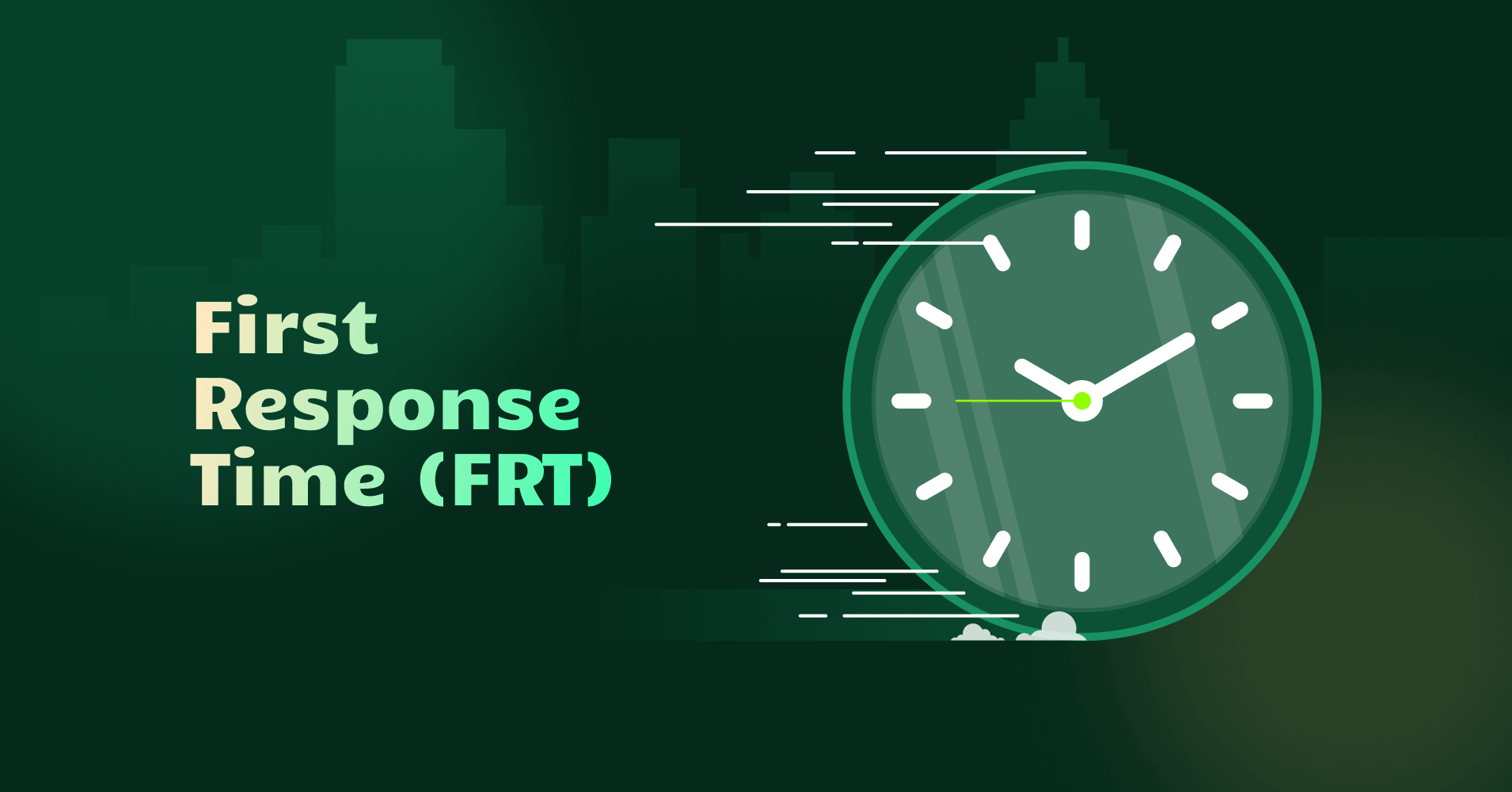
Meaning of First Response Time (FRT): Calculate and Improve It
In customer support, there is a term we hear about almost all the time. It’s the famous First Response Time or FRT. Nowadays, modern support teams are stepping forward to focus on this term, as it is directly related to customer satisfaction.
Moreover, businesses typically include a baseline FRT in their service level agreement (SLA), ensuring a response within a predetermined timeframe.
So, if you are in the loop with customer support, you probably want to get deep insights about it.
In this blog, we will discuss everything you need to know about First Response Time (FRT). First of all, we will talk about an elaborate explanation of what it is. Then, we will talk about how to calculate it and have some practical discussion to improve your First Response Time.
Okay. Let’s jump into the action!
What is First Response Time (FRT)?
First, let’s know the meaning of the First Response Time with a concise and meaningful definition. After that, you will experience the elaboration part of this fun brain teaser topic.
Meaning of First Response Time (FRT)
First Response Time or FRT is the measurement of how long it takes your support reps to provide an initial response to a customer request.
Let’s talk more elaborately about this.
The term “First Response Time” is interchangeably known as “First Reply Time” for many customer experience experts. When you delve deep into it, the first thing that comes is how quickly your support agents are responding to your customer inquiry.
Here, everything that matters is the passing time between a customer who submits a ticket and a support agent’s first reply to it.
Typically, customers hate to wait in queues to get their issues resolved. All they want is a quick response and an early resolution. Unfortunately, early resolution is not always possible. Some will take minutes, hours, or even days to resolve.
In that period from an issue being created to its resolution, the First Response Time works as a relevancy for that customer.
A speedy initial response can reassure your customer that you are working on their issue and can make them feel that you are concerned about them. That’s why a support team should focus on their FRT.
On the other hand, if your first response is not good enough, this may decrease the expectations of your customer. Even resulting in the loss of your business.
The more you focus on improving FRT, the more you can gain the acceptance of your customers.
How do you calculate First Response Time?
In customer support management, regularly calculating the First Response Time is a good practice. This calculation will provide you with deep insights into the efficiency of your support operations.
Measuring FRT is a relatively simple process. You can measure it in minutes, hours, or days, depending on the standard of your business.
To find out the average, first, you need to total up all the time the support team took to respond to tickets. Then, divide that total by the number of tickets responded to.
Here is the formula:
Average FRT= total number of First Response Times / total number of tickets responded to
When calculating the average FRT, try to get an accurate result to get the most out of your effort. Here are two tips for you:
- Exclude automated responses.
- Only include the data of business hours unless you provide 24/7 customer support.
How to improve First Response Time?
So, you know what the first response time is and how to calculate it. Now, you are in the most crucial section of this blog.
Read on.
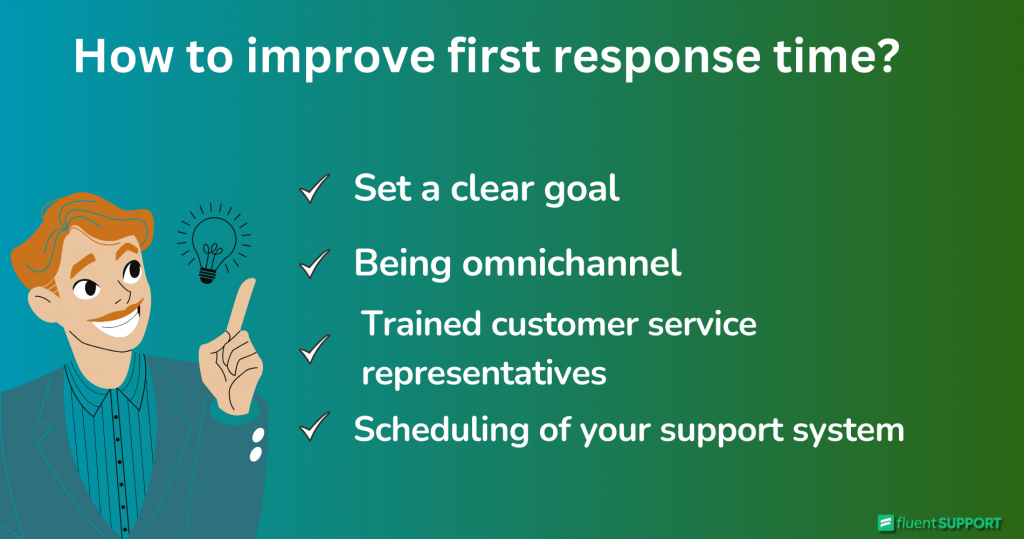
Set a clear goal
When there are several steps to talk about, there is always a first and foremost step. And that crucial step is setting a clear goal to improve the First Response Time. A clear goal will undoubtedly guide your support team to a proactive position.
Of course, plan your goal to be realistic and attainable. Otherwise, you will increase the chance of demotivating or burning out your support representatives. Most importantly, while setting the goal, consider the efficiency of your support representatives.
In this process, a strategic move for you is to get to know the standard benchmarks for FRT in your industry and align them with them. Besides, gain an understanding of how they are emphasizing creating a positive FRT and initial customer satisfaction.
The flow of ticket submissions does not always remain constant. So, your team needs to be on standby for every situation. In this scenario, a strong mindset for continuous improvement and access to flexibility will make the task go smoothly.
Considering this aspect, don’t get stuck on one particular strategy. Be flexible and continuously modify the strategy for different occasions and peak hours. By doing so, you can meet the goal of reducing the FRT.
To clarify, we are suggesting you change and optimize the strategy. Not the goal!
This particular strategy could help you get a lot closer to your goal.
Key suggestion: When setting a goal, make sure you align it with customer expectations and service level agreements.
Being omnichannel
Being omnichannel is a wise move for improving the First Response Time.
That’s why you should never limit your support options to a single channel. You may think you can delicately monitor your support system from a single channel. This kind of perspective results in shrinking your support system, which results in a poor First Response Time.
In this modern era of business, customer service or support systems are getting smarter and more competitive. Therefore, to adapt to this competition, one of your strong moves should be to diversify your support channels.
Even if you are providing support systems seamlessly through one channel, you need to be prepared to embrace omnichannel to improve your FRT in the coming days.
Set the stage for leveraging diverse communication channels like SMS, email, social media, live chat, communication apps, etc. to make the support system swift and effective. In this manner, you are offering your customers the opportunity to choose how their issues will be handled.
Maintaining omnichannel doesn’t mean you go for all channels that are near your hands. What’s best for you is to handpick your support channel, considering the convenience of both your support representatives and your customers.
For instance, resolving an issue or making a first response via email is not a good option when you are in the state of mind of optimizing the first response time. Instead, you can go to the support portal for live chat, phone support, video support, etc.
In addition to all of this, while picking a particular support channel, ensure that the channel is mobile-friendly. Many customers prefer to get support using a phone, which can be either a mobile app or a mobile-friendly website.
Trained customer support representatives
Even though you hire an expert support agent, proper training is much needed to avoid cluelessness in the support process. Make sure your support team is well-trained and adequately staffed.
Complex queries are the pain point for every support representative. A support agent should always be up-to-date on tackling several complex and newly created questions.
For example, when a complex query comes in, a support representative needs to give an initial reply. Moreover, it is smart practice to mention the procedure for how the issue will be resolved.
In this situation, the support agent can reply smartly only when the support member is familiar with that complex topic. So, you may be realizing the importance of a trained and up-to-date support agent.
Even if a support agent is a nerd, don’t make him busy with multitasking. A well-trained support agent has the efficiency to handle multiple support channels simultaneously.
However, the theoretical fact is that the human brain has limitations in capacity. This type of multitasking may lead to an overwhelming experience for an agent. As a result, this may affect the quality of work and the level of concentration.
Key suggestion: Make sure your support representatives are well-equipped with modern tools. You can choose the tools according to your support team’s workflow and goals.
Scheduling of your support system
Now, let’s talk about a viable and realistic model for improving your first response time. That is the scheduling of the support system.
First of all, you need to analyze previous data sets to determine at what time your ticket comes in. Make sure to consider data on business hours, non-business hours, and the weekend.
This may seem pretty unfair to you to include the data from non-business hours and weekends.
Nevertheless, you need to do that, as your support ticket doesn’t come up according to your business hours. It comes when an issue is created at the customer end. So, be data-driven and schedule your support system according to the analysis.
Most importantly, when scheduling your support system, always keep in mind your customer base. Your customer base can be global or regional.
When your customer base is regional, you have the option to schedule a specific time—a dedicated time for providing support. Considering the activity of customers in your region, schedule a dedicated time.
If possible, staff up for that specific time when your tickets most frequently come in. During the rest of the time or non-business hours, you can loosen up the grip of your support system.
On the contrary, if your customer base is across the globe, you will find some complexities. In this circumstance, you can’t schedule a dedicated time.
You know that the sun shines and sets at different times in different regions, as do their activities and ticket submissions. So in this circumstance, you need to be geared up all the time to respond to the initial queries of that customer.
Thinking about how to handle such complexities?
No worries. We will tell you about an amazing model to organize your support system that ensures continuous coverage.
And that is the “follow-the-sun model.”
By adhering to this model, you could provide round-the-clock customer service, literally following the sun around the globe.
To reduce the FRT, you need continuous and uninterrupted customer care support 24/7. For that reason, we want to suggest that you embrace this trustworthy model for the betterment of your support system.
As we are talking about a global support system for your global support, with the help of this model, you can go for continuous and uninterrupted customer support in different time zones.
According to this model, there is always a team that actively works, changing shifts from one team to another as the day progresses globally.
So, what benefit will it bring to your support system?
After applying this model, you will surely improve your First Response Time, as there is always a team actively working, ready to provide initial and overall support.
Moreover, in this model, your workflow will be smooth enough to transfer critical and ongoing issues between the shifts.
Key suggestion: You may opt for outsourcing support agents during peak hours. It will reduce the pressure on your in-house support agents.
Wrap up
In the end, let me tell you one thing. A business with high customer retention will take your business’s revenue a long way you can’t even imagine. This will only be possible when your customers are satisfied with your service. Here, an optimized FRT will assist you even a little bit.
Furthermore, when you can improve the First Response Time as much as possible, you are one step ahead of your competitor.
So, I want you to assemble your team and spare no effort to improve FRT.
Lastly, I appreciate you taking the time to read this blog.









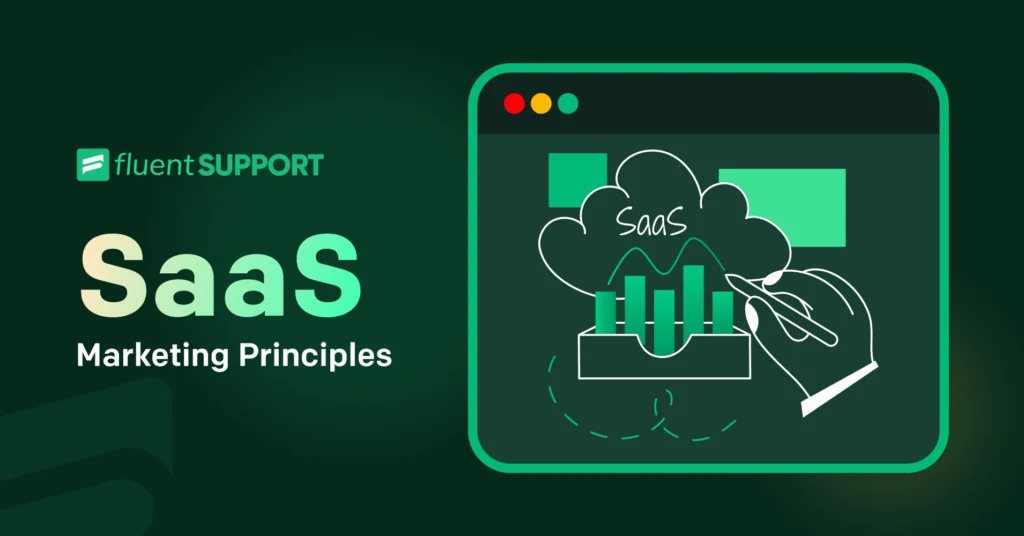
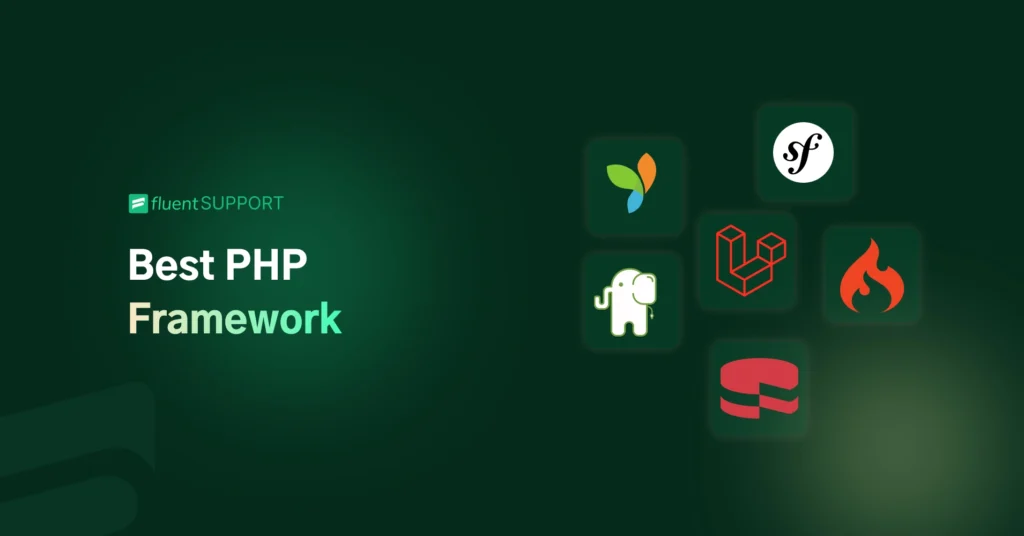
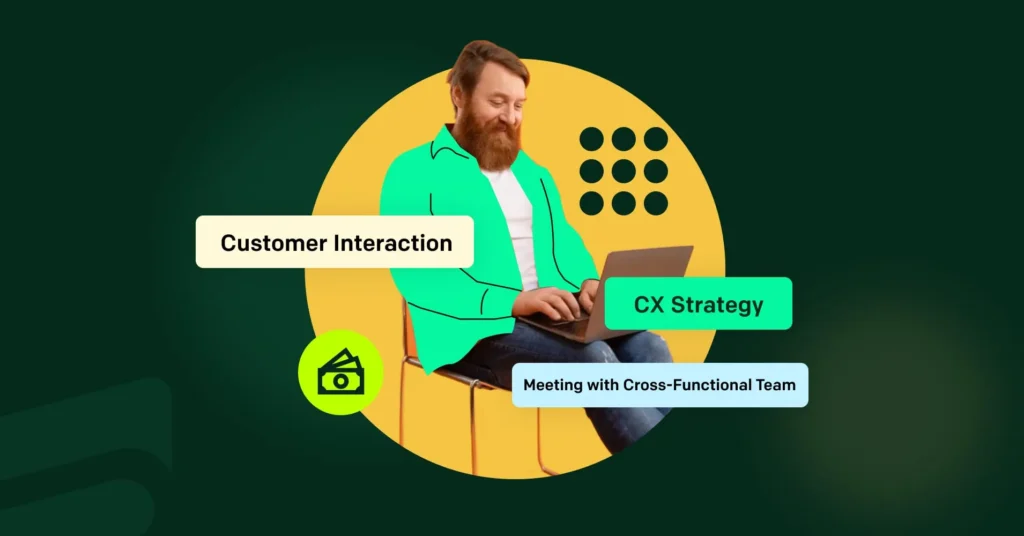
Leave a Reply